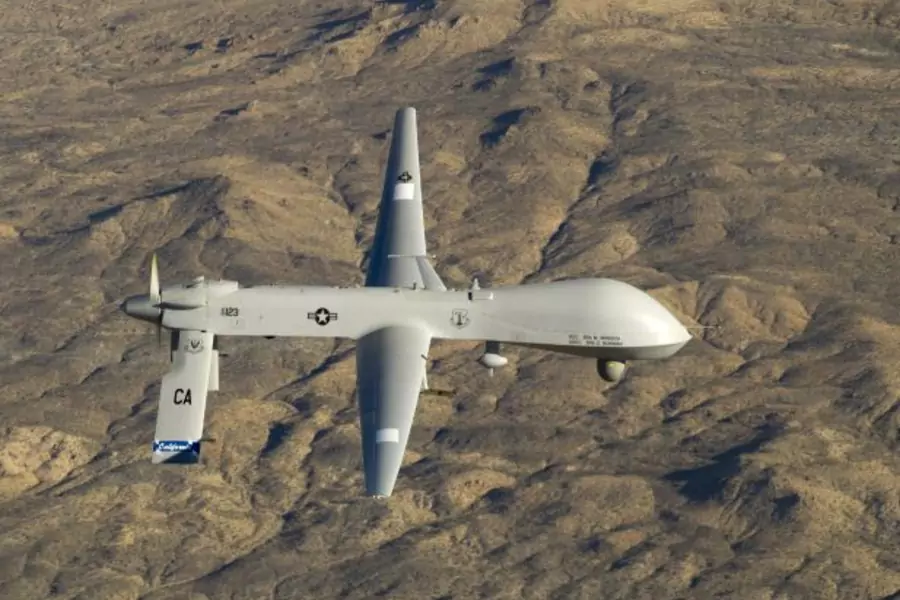You Might Have Missed: Drone Strikes, Civilian Casualties, and John Brennan

More on:
Dianne Feinstein, Opening Remarks at the Senate Intelligence Committee Confirmation Hearing for John Brennan, February 7, 2013.
I’ve… been attempting to speak publicly about the very low number of civilian casualties that result from such strikes, [but] I’ve been limited in my ability to do so,” Feinstein said. “But for the past several years, this committee has done significant oversight of the government’s conduct of targeted strikes and the figures we have obtained from the executive branch, which we have done our utmost to verify, confirm that the number of civilian casualties that have resulted from such strikes has typically been in the single digits.
(3PA: According to this story from Politico: “However, after the hearing Feinstein told journalists she was unaware of reports that in some instances U.S. officials assumed any male of fighting age killed in a strike was a combatant—a method that could undercount the number of civilian deaths.”)
Noah Shachtman, “Is This the Secret U.S. Drone Base in Saudi Arabia?” Danger Room, February 7, 2013.
Tara McKelvey, Media Coverage of the Drone Program, Joan Shorenstein Center on the Press, Politics, and Public Policy, February 2013.
For this paper, an informal survey of news articles about drone strikes was conducted, looking at pieces that appeared in five major U.S. publications: The Christian Science Monitor, The New York Times, Time magazine, The Wall Street Journal, and The Washington Post. The media coverage of strikes in these publications nearly doubled during the Obama administration, from 326 articles in 2009 to 625 articles in 2012 (as of November).
Reporters and editors at The New York Times pursued the story of the targeted-killing program more aggressively than reporters at the other publications, both in terms of the quantity of articles and also in the quality of content. In 2009, the year Obama was sworn in as president, The New York Times published 142 articles. Three years later, The New York Times published 245 articles on the subject, many of which focused on the international angle of the story. The Washington Post published 72 articles in 2009, reflecting in part the newspaper’s interest in the business of Washington, federal agencies such as the Department of Defense and the Central Intelligence Agency, which were managing the drone program. Over the next three years, The Washington Post and The New York Times both increased their coverage at roughly the same rate. The New York Times kept its focus on the international angle, while reporters at The Washington Post continued to look more closely at the federal agencies involved in the program. The Washington Post published 234 articles on the subject in 2012, nearly the same number that appeared in The New York Times.
Craig Whitlock, “U.S. Counterterrorism Efforts in Africa Defined by a Decade of Missteps,” Washington Post, February 4, 2013.
Jane Sutton, “U.S. Faces Construction Quandry at Aging Guantanamo Camp,” Reuters, February 3, 2013.
"I haven’t gotten any guidance on it whatsoever, so everything I’m doing right now is kind of just speculating on what’s going on," Nettleton said in a weekend interview with Reuters. "From a resourcing standpoint, it’s kind of frustrating to not know if they’re going to be permanent residents or not."
State of the Union with Candy Crowley, “Interview with General McChrystal and General Hayden,” CNN, January 27, 2013.
CROWLEY: I want to talk to you all about drones, because this has been a fascination of mine. The increased use of drones and what is it doing to U.S. reputation overseas? I think you all disagree as to whether these are -- certainly it keeps U.S. troops safer, because you don’t have to send actual U.S. personnel in, but is it doing more harm than good the increase in the use of drones in Pakistan and Somalia and Yemen?
MCCHRYSTAL: I think first off, Candy, they are extraordinarily effective. And they are a tool we have to have.
MCCHRYSTAL: And we need to be able to not only use them for reconnaissance, but also to strike.
The problem is every time you take a shot, you need to do a calculation, and I think we’ve done that in the past at the effect it has around the target then the effect it emanates further. If you look in a place that is a sovereign country, if we reach in and technologically shoot, there is a danger that in the United States that was pretty easy, that really wasn’t an act of war. We didn’t put American boots on the ground, we didn’t accept risk. It can lower the threshold for decision making to take action that at the receiving end, feels very different at the receiving end.
CROWLEY: It feels like war, particularly because civilians get killed.
MCCHRYSTAL: Absolutely.
HAYDEN: Look, I’ve watched this since the program really kind of stepped up in mid-2008 and it got stronger as time went on.
Now, I would suggest to you in 2008, we were very much focused on what were clearly imminent threats against the homeland, because we saw what was going on inside al Qaeda training camps. And so for that period of time, and for a period of time afterward, that was a compelling concern, that was the one that drove your actions, even though you knew, you had secondary and tertiary effects out here that one day you have to live with.
Well, I think we have got to a point now in many if not most areas of the world, but in many areas of the world, that now those secondary and tertiary affects may actually be the prime result of some of these strikes. And that would then give you reason to pause.
Now that’s carefully laid out, Candy. That’s not suggesting what went on before was incorrect. It was quite correct. But now circumstances have changed. And the correct decision might be a bit gentler.
More on:
 Online Store
Online Store